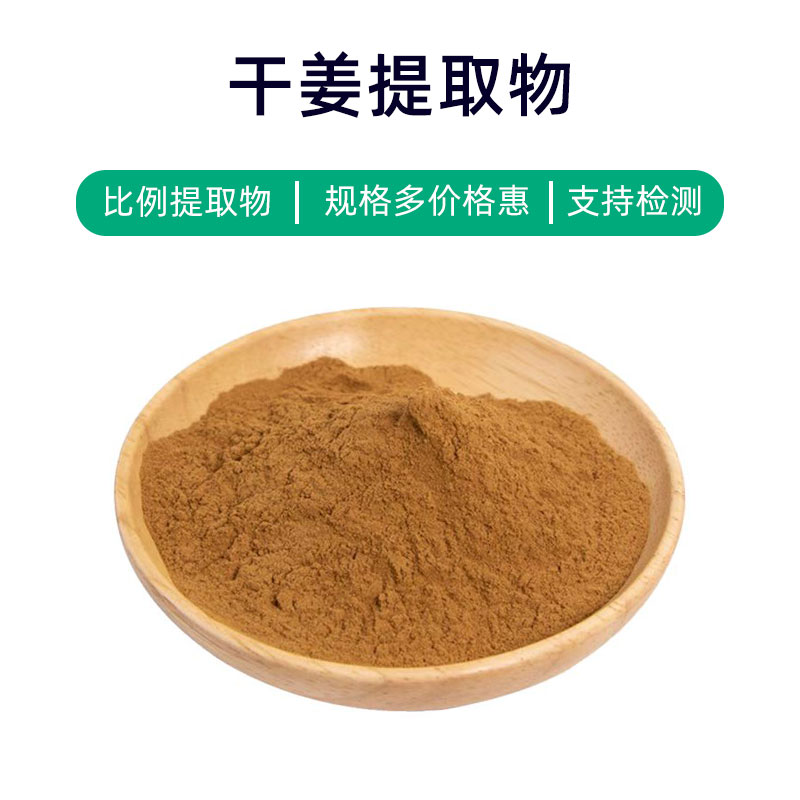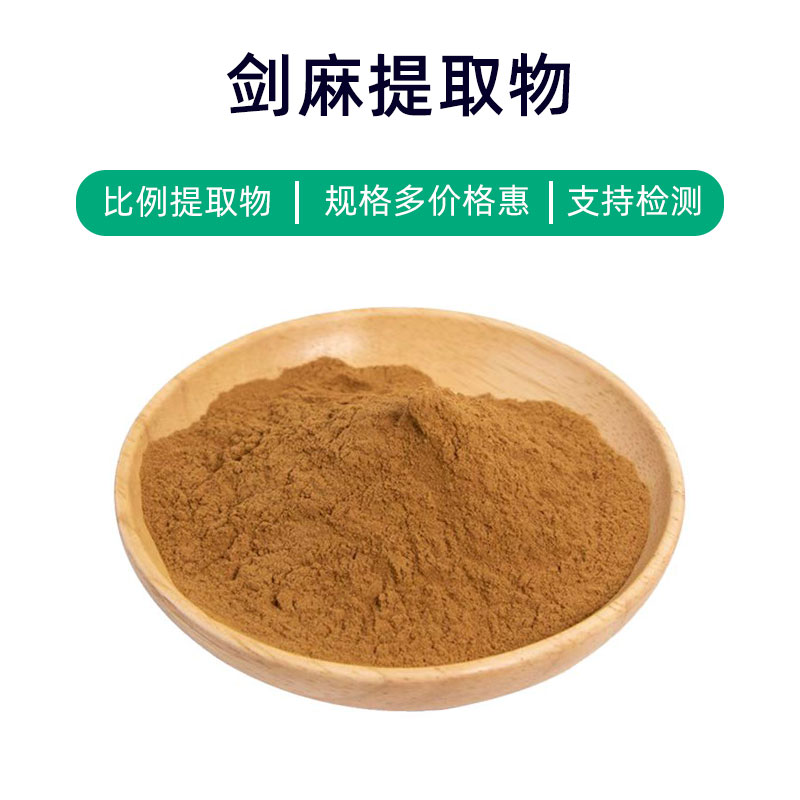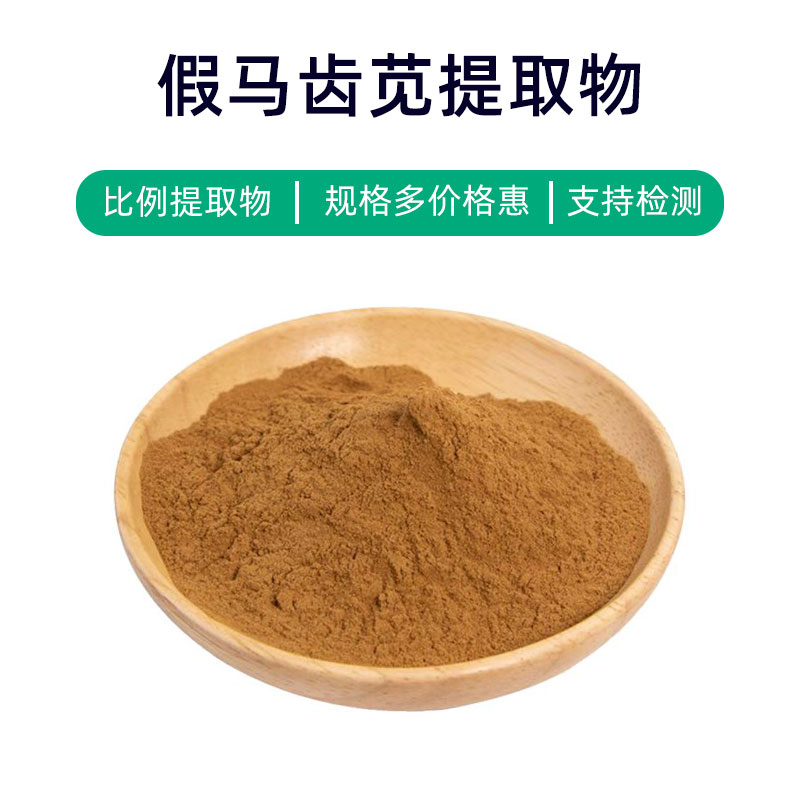Ginger - Galangal Extract Product Description
Ginger - Galangal Extract is a natural plant extract derived from the rhizome of galangal (Zingiber officinale), primarily composed of gingerol, shogaol, and gingerdiol. These bioactive components give the extract several benefits and a wide range of applications.
The extract is extensively used in the pharmaceutical, dietary supplement, food, and cosmetic industries. Its key benefits include antioxidant, anti-inflammatory, antibacterial, and digestive support. Gingerol, as one of its main active components, exhibits significant antioxidant and anti-inflammatory effects, helping to combat free radical damage and reduce inflammatory responses. Shogaol and gingerdiol also demonstrate antibacterial and anti-inflammatory properties, aiding in the prevention and alleviation of various diseases.
In the pharmaceutical field, ginger - galangal extract is commonly used to prepare medications for digestive issues like indigestion, nausea, and vomiting, as well as for supportive treatments for conditions such as rheumatic pain and arthritis. In dietary supplements, it is often included as a natural ingredient to boost immunity, support digestion, and enhance gastrointestinal health. In food and cosmetics, the extract is utilized as a flavoring agent, spice, and antioxidant, and is also included in skincare products for its soothing and anti-inflammatory benefits.
Overall, ginger - galangal extract, as a natural plant extract, offers multiple benefits and has broad application prospects in pharmaceuticals, dietary supplements, food, and cosmetics.
Ginger - Galangal Extract Production Process
The production process of ginger - galangal extract typically includes the following steps:
- Raw Material Preparation: Fresh galangal rhizomes are selected as raw materials, cleaned, peeled, and chopped to ensure quality and purity.
- Extraction: Suitable extraction methods, such as water extraction, ethanol extraction, or supercritical fluid extraction, are employed to extract active components from the rhizomes. Water extraction is commonly used as it retains more natural compounds.
- Concentration: The extract solution is concentrated to remove most of the solvent, resulting in a concentrated liquid.
- Precipitation and Separation: Appropriate methods are used to precipitate impurities and solid matter from the concentrated solution, allowing for the separation of the pure extract.
- Filtration and Purification: The extract solution undergoes filtration and purification to remove any remaining impurities and solid particles, ensuring product purity and quality.
- Drying: The extract is dried to remove moisture, turning it into a dry powder or granular form.
- Grinding and Packaging: The dried extract is ground or granulated to meet product specifications and is appropriately packaged to ensure quality during storage and transport.
- Quality Control: Throughout the production process, strict quality control is maintained to monitor raw material quality, extraction parameters, and product composition, ensuring stability and reliability.
The above outlines the general production process for ginger - galangal extract, though specific methods may vary slightly among different manufacturers.
Ginger - Galangal Extract Effects and Side Effects
Ginger - galangal extract offers several benefits, primarily including:
- Antioxidant Effects: Rich in antioxidants, ginger - galangal extract helps eliminate free radicals within the body, protecting cells from oxidative damage and slowing aging.
- Anti-inflammatory Effects: The active components in ginger - galangal extract exhibit anti-inflammatory properties, helping to suppress inflammatory responses and alleviate symptoms of conditions such as rheumatoid arthritis and inflammatory bowel disease.
- Digestive Support: Ginger - galangal extract stimulates digestive fluid secretion and enhances gastrointestinal motility, aiding in food digestion and alleviating issues like indigestion and bloating.
- Anti-tumor Effects: Active components such as gingerol are believed to have anti-tumor properties, inhibiting the growth and spread of tumor cells, which may help in the prevention of certain cancers.
- Immune Regulation: Those active components can modulate immune system functions, increasing the body's resistance and preventing infections and diseases.
- Antibacterial and Antiviral Effects: Components in ginger - galangal extract demonstrate antibacterial and antiviral properties, which help inhibit the growth of bacteria and viruses, supporting the prevention of infectious diseases.
- Blood Sugar and Lipid Regulation: It has been found to have a certain effect on lowering blood sugar and regulating blood lipids, which may benefit the prevention and control of metabolic diseases like diabetes and hyperlipidemia.
Generally considered a natural plant extract, ginger - galangal extract has few side effects, yet individual responses may vary; a small number of people may experience digestive discomfort or allergic reactions. It is recommended to follow medical advice and avoid excessive use to prevent discomfort.
Ginger - Galangal Extract Application Scenarios and Dosage
Ginger - galangal extract has wide applications in pharmaceuticals, food, and cosmetics. Here are its main application scenarios and recommended dosages:
- Pharmaceutical Field:
- Digestive System Disorders: Commonly used to treat indigestion, bloating, nausea, and vomiting. Typically taken orally, 2-4 grams per dose, 2-3 times daily.
- Anti-inflammatory Treatment: Used for treating inflammatory diseases such as rheumatoid arthritis. Can be applied topically as a cream made from the extract, applied to the affected area 2-3 times daily.
- Immune Regulation: Acts as an immune modulator to enhance immune function. Generally taken orally at 3-6 grams per dose, 2-3 times daily.
- Food Industry:
- Flavoring: Commonly used as a flavoring agent to enhance the aroma and taste of food. Can be added in appropriate amounts during cooking.
- Health Foods: Used in health food products, contributing functions such as boosting vitality, aiding digestion, and providing antioxidant benefits. Suggested daily intake is 500-1000 milligrams.
- Cosmetics Sector:
- Skin Care: With antioxidant and anti-inflammatory effects, it can be included in skincare products like creams, lotions, and masks. Recommended usage is 0.5-2% of the total product formulation.
- Hair Care: Ginger - galangal extract may stimulate the scalp and can be incorporated into hair care products like shampoos and hair masks. Typical dosage is 0.5-2% of the total formulation.
- Other Areas:
- Medicinal Alcohol Extracts: Also used as an ethanol extract for medicinal purposes to regulate health and enhance vitality, with an oral dosage of 5-10 milliliters generally recommended.
When using ginger - galangal extract, dosages should be tailored to specific applications and individual conditions, while adhering to the product's recommended usage guidelines. Special populations (e.g., pregnant women, children) should consult with a physician to avoid excessive or improper use that might lead to side effects.
Ginger - Galangal Plant Introduction, Distribution, and Growth Conditions
Ginger - Galangal (scientific name: Zingiber officinale Roscoe var. officinale), commonly referred to as ginger, is a perennial herb in the ginger family. Below is a detailed description of the plant’s origin, distribution, and growing conditions:
- Plant Description:
- Ginger - Galangal is a well-known spice and medicinal plant with a long history. The underground rhizome (often called a ginger root) is a common medicinal material and seasoning. The plant grows about 1-1.5 meters tall, features nodes, has opposite leaves that are long and lanceolate, and produces yellow flowers in its inflorescence.
- Distribution:
- Originating from Southeast Asia, ginger is primarily distributed across regions in India, southern China, Thailand, Malaysia, and Indonesia. Major production areas in China include Guangdong, Guangxi, Fujian, Hainan, and Yunnan, with Fujian Province being particularly famous for its ginger.
- Growing Conditions:
- Ginger prefers loose, moist, and nutrient-rich soils and thrives with ample sunlight and good ventilation. It prefers a warm, humid climate, with an optimal growth temperature of 20-30 degrees Celsius, and is sensitive to low temperatures and cold.
- Growth Cycle:
- As a perennial plant, ginger typically has a growth cycle of about 8-10 months. In suitable conditions, the growth rate of ginger rhizomes is relatively fast, and they thicken towards the end of the growing season, marking the best time for harvest.
- Cultivation Techniques:
- Ginger is a shade-tolerant plant, suitable for growing in low light conditions. During cultivation, it is essential to keep the soil moist but not waterlogged, apply fertilizer timely, and manage weeding and soil loosening to promote plant growth and rhizome development.
- Characteristics of Major Production Areas:
- In China, Fujian Province is one of the main producing regions, characterized by a warm climate, abundant rainfall, and fertile soil, all conducive to ginger's growth. Particularly in Yongchun County in southern Fujian, the unique climate and soil conditions yield high-quality ginger with notable market competitiveness.
Overall, ginger - galangal is a plant widely distributed in tropical and subtropical regions, favoring growing conditions such as moist soil, warm climate, and good ventilation.
Processing and Storage of Ginger - Galangal Extract
Processing and storage of ginger - galangal extract are critical steps in ensuring its quality and efficacy:
- Processing Steps: Ginger - galangal is typically processed through washing, slicing, drying, and grinding. Drying is a crucial step to reduce moisture content and extend shelf life.
- Storage: Processed ginger - galangal extract should be stored properly, usually in a dry, cool, and well-ventilated place, avoiding direct sunlight and humidity. It is recommended to use sealed containers or bags to prevent moisture and oxidation.
- Contamination Prevention: During processing and storage, care should be taken to prevent contamination, minimizing exposure to external impurities to maintain product quality and safety.
- Inspection and Monitoring: Regular inspections and monitoring of the ginger - galangal extract can be carried out to check its appearance, odor, and physicochemical indicators, ensuring product quality and stability.
- Recommended Shelf Life: Under appropriate storage conditions, ginger - galangal extract generally retains efficacy for a certain period. It’s important to check the production dates and expiration dates before use and to use the product within its valid time frame to avoid expired usage.
By following these measures, we can effectively ensure the quality and stability of ginger - galangal extract, securing its application outcomes in pharmaceuticals, food, or cosmetics.
Monica Sun is a seasoned expert in the plant extraction industry with over a decade of experience in research and production. She specializes in the extraction and purification of plant active ingredients, focusing on driving innovation in natural product applications. Monica has participated in the development of multiple functional plant extracts, delivering high-value natural raw material solutions for the health food, pharmaceutical, and dietary supplement sectors.



















